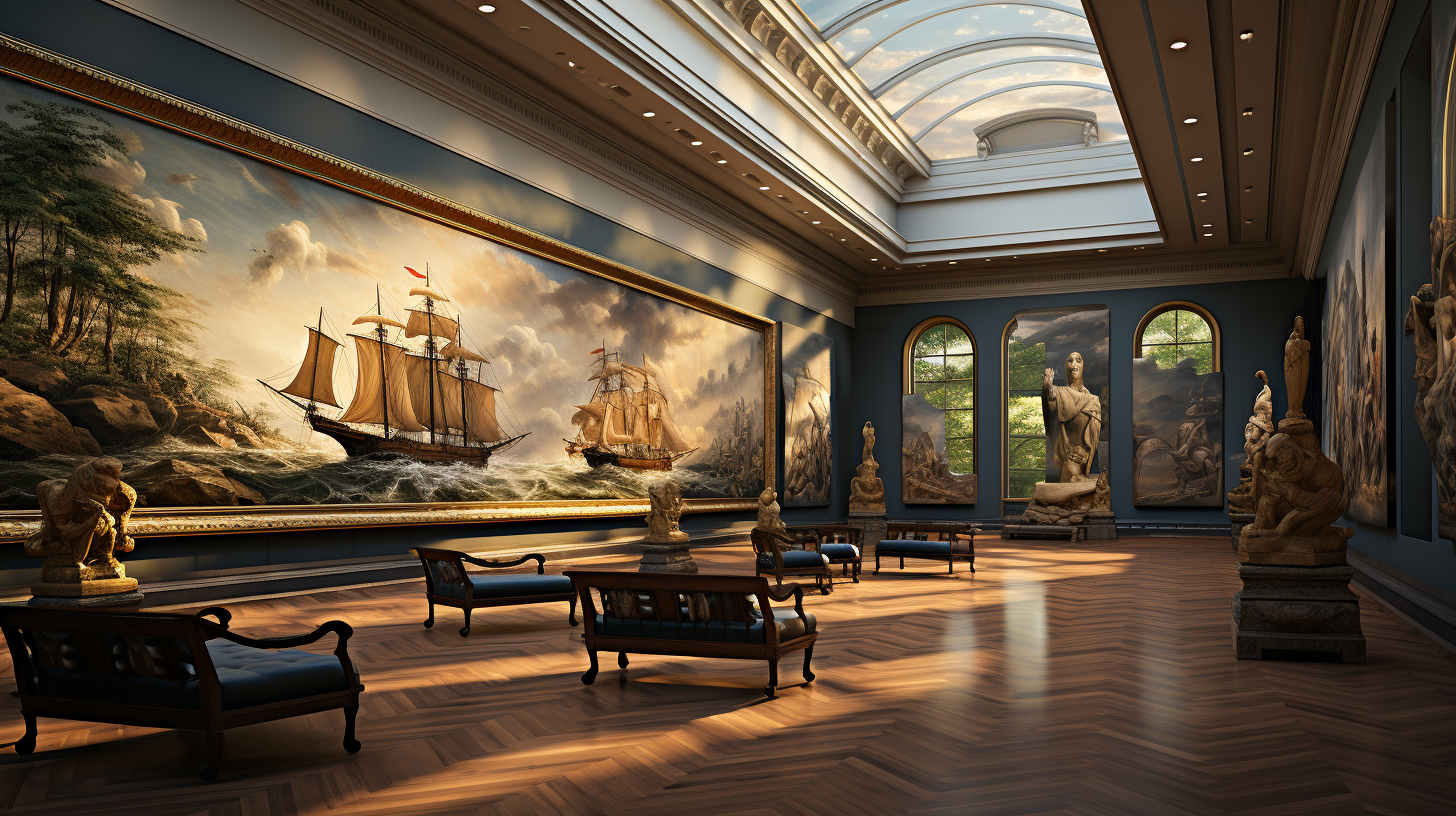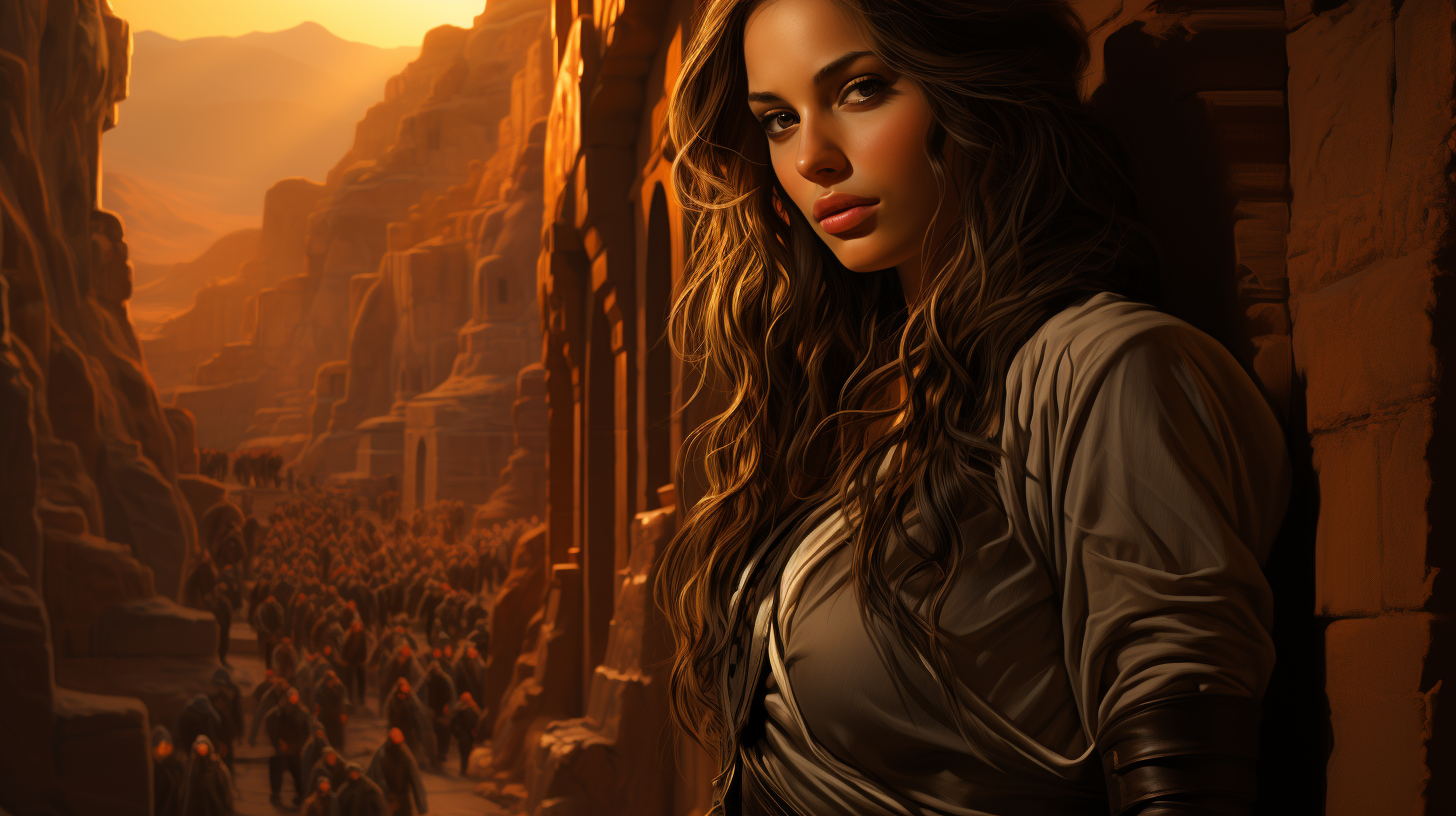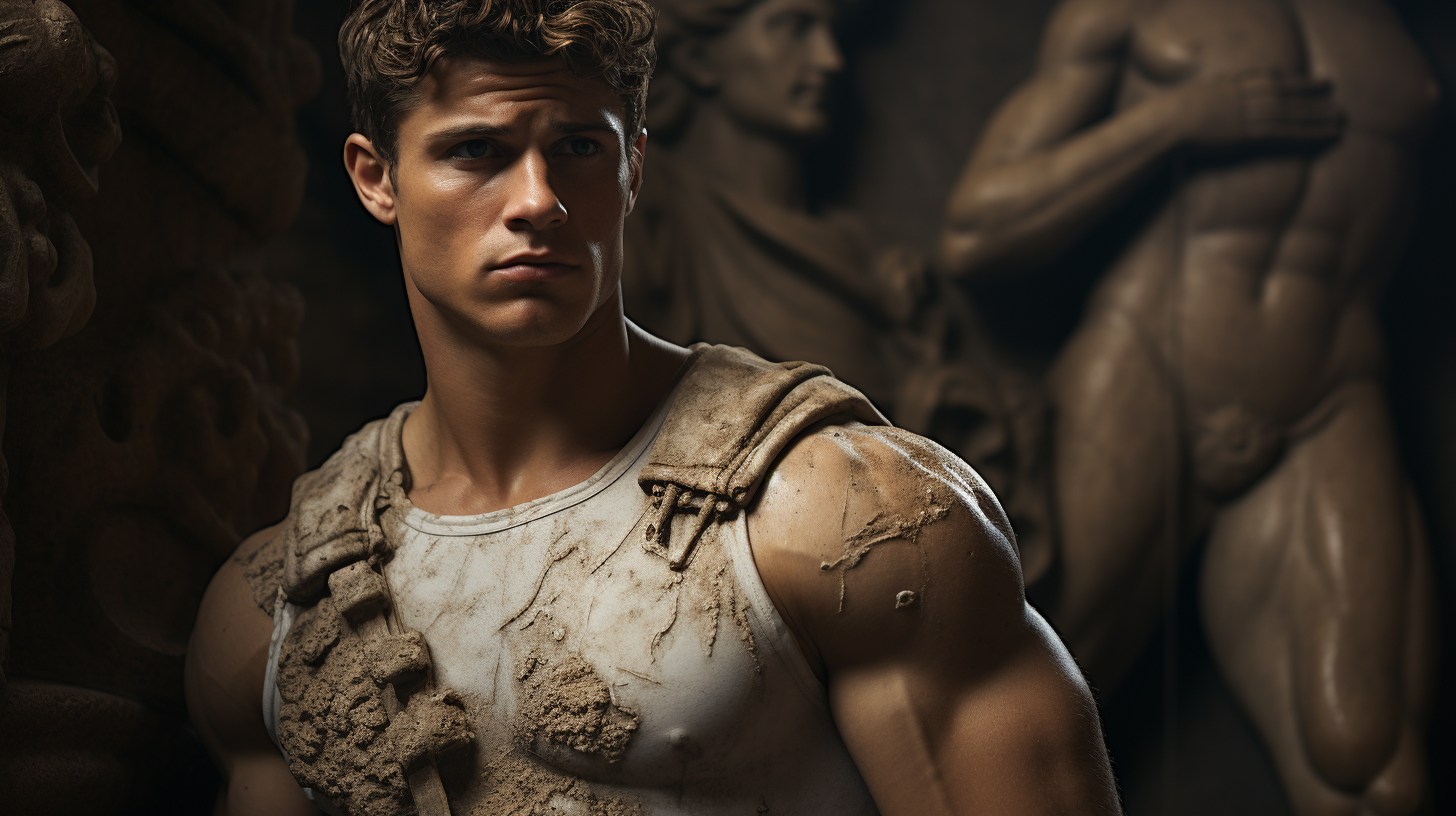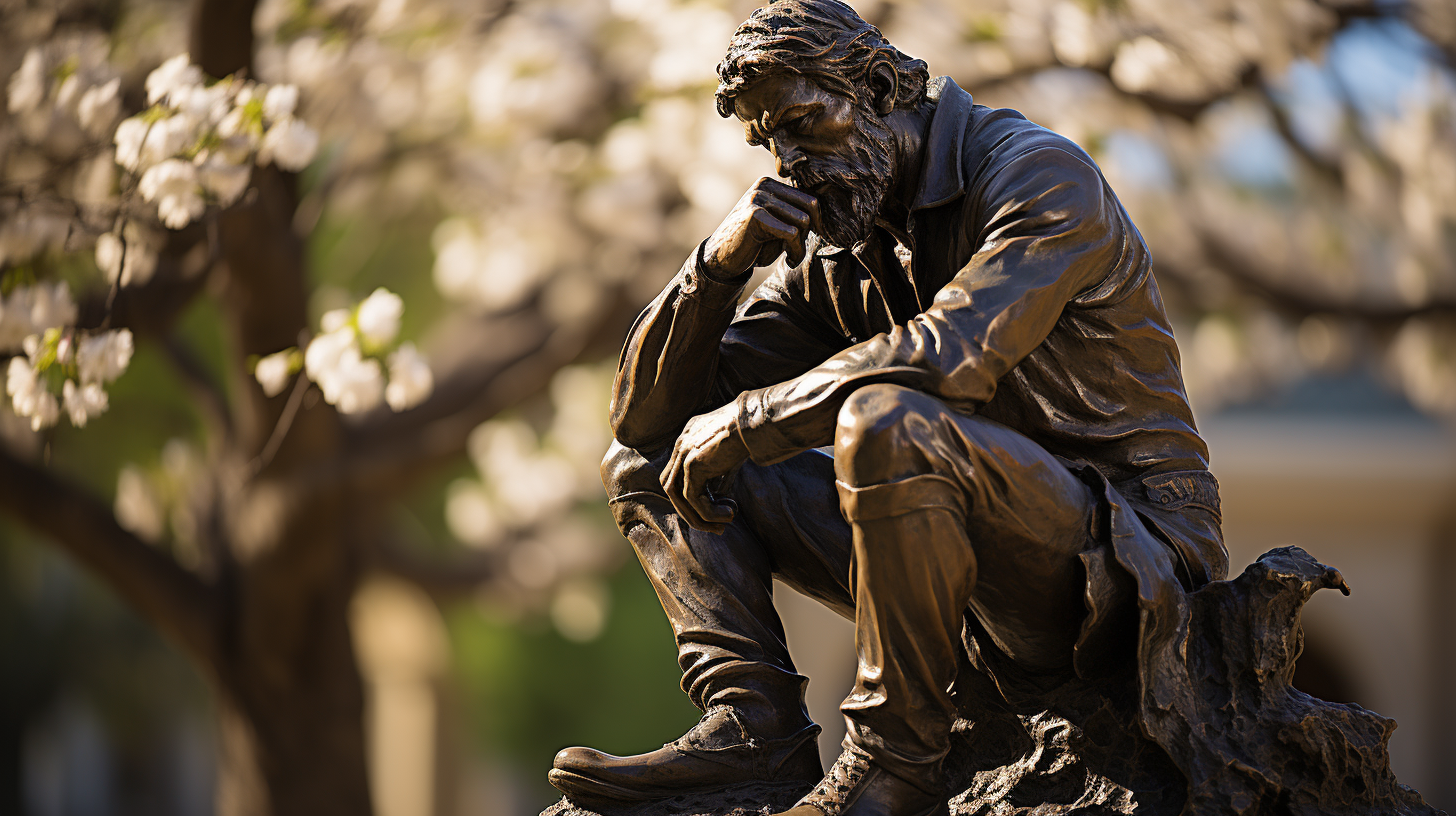Top 10 Art Pieces That Embody Leadership And Influence
The top 10 art pieces that embody leadership and influence include “The Thinker” by Rodin and “Washington Crossing the Delaware” by Leutze. These masterpieces capture the essence of leadership and inspire viewers.
Art has long been a medium through which powerful messages are conveyed. Some pieces resonate deeply with themes of leadership and influence. Artists use their creations to depict historical moments, heroic figures, and influential leaders. These art pieces serve as a reminder of the strength, vision, and determination required to lead effectively.

Whether through sculpture, painting, or other mediums, these works inspire and motivate viewers. They reflect the qualities of great leaders and the impact they have on society. Understanding these pieces offers insight into the timeless nature of true leadership.
The Power Of Art In Leadership
Art holds the power to inspire and lead. It transcends barriers and speaks to the soul. Art can convey messages of courage and vision. It can influence society and shape history. This blog explores ten art pieces that embody leadership. Each piece showcases how art can lead and inspire.
Impact On Society
Art can impact society in many ways. It can ignite movements and encourage change. Art can reflect societal values and inspire action. Consider Pablo Picasso’s Guernica. This painting depicts the horrors of war. It raised awareness and stirred anti-war sentiments worldwide.

Another example is the Statue of Liberty. This iconic statue symbolizes freedom and democracy. It has inspired millions of immigrants and tourists. Art like this can shape public opinion and drive social change.
Historical Significance
Art often marks important historical moments. It can capture the essence of a time period. Leonardo da Vinci’s Mona Lisa is one such piece. It reflects the Renaissance era’s humanism and innovation.

The Great Wall of China is another example. This vast structure represents strength and protection. It showcases the leadership of ancient Chinese emperors. Art pieces like these offer a glimpse into history and leadership.
| Art Piece | Artist | Significance |
|---|---|---|
| Guernica | Pablo Picasso | Anti-war sentiment |
| Statue of Liberty | Frédéric Auguste Bartholdi | Freedom and democracy |
| Mona Lisa | Leonardo da Vinci | Renaissance humanism |
| Great Wall of China | Various | Ancient Chinese leadership |
Criteria For Selection
Understanding the criteria for selecting the top 10 art pieces that embody leadership and influence is essential. These criteria ensure that each piece reflects both artistic merit and leadership themes. Each selection inspires and teaches about the essence of true leadership.
Artistic Excellence
Artistic excellence includes visual impact, technique, and innovation. Each artwork must captivate the viewer and display exceptional skill. Here are the key factors considered:
- Visual Impact: The artwork must be striking and memorable.
- Technique: Mastery of the medium and method used.
- Innovation: Unique and original approach to the subject.
Leadership Themes
Leadership themes are crucial in selecting these art pieces. The artwork must clearly convey messages of leadership and influence. The following aspects were considered:
- Symbolism: Use of symbols that represent leadership qualities.
- Inspiration: The ability to inspire and motivate viewers.
- Historical Context: Connection to significant leaders or movements.
| Criteria | Description |
|---|---|
| Artistic Excellence | Visual impact, technique, and innovation. |
| Leadership Themes | Symbolism, inspiration, and historical context. |
David By Michelangelo
David by Michelangelo is one of the world’s most famous sculptures. Created between 1501 and 1504, this masterpiece stands 17 feet tall. It represents the biblical hero David, known for his battle against Goliath. This incredible artwork embodies themes of courage, strength, and leadership.
Symbol Of Courage
The David sculpture symbolizes immense courage. David’s confident stance shows his readiness to face Goliath. His determined gaze represents inner strength and bravery. This piece inspires viewers to confront challenges head-on.

Michelangelo’s attention to detail highlights David’s muscular build. This showcases not just physical strength but also mental fortitude. The statue stands as a reminder of the power of courage in leadership.
Renaissance Influence
David by Michelangelo is a prime example of Renaissance art. It reflects the era’s focus on humanism and individual potential. The meticulous craftsmanship shows Renaissance ideals of beauty and proportion.
The statue also embodies the spirit of the time. It celebrates human achievement and the importance of personal excellence. Michelangelo’s David continues to influence modern art and leadership concepts.
The Thinker By Rodin
The Thinker by Auguste Rodin is a renowned sculpture that captures the essence of leadership and influence. This masterpiece, created in 1902, represents a man deep in thought. The pose and expression convey a powerful sense of introspection and decision-making. It stands as an enduring symbol of human contemplation.
Contemplation And Decision Making
The Thinker depicts a man lost in thought, reflecting on complex issues. This embodies the core of leadership, where deep thinking leads to wise decisions. Leaders must often pause and reflect, considering various perspectives. This sculpture reminds us of the importance of quiet contemplation. It emphasizes that thoughtful consideration precedes effective action.

Cultural Impact
The Thinker has had a significant impact on culture worldwide. It has been featured in various media, from movies to literature. Its image is synonymous with deep thought and intellectual rigor. This sculpture has inspired many to value reflection and critical thinking. Its influence extends beyond art, touching education, philosophy, and leadership training.
| Aspect | Details |
|---|---|
| Artist | Auguste Rodin |
| Year | 1902 |
| Medium | Bronze |
| Dimensions | 73 x 41 x 58 inches |
- Leadership: Encourages deep thinking before making decisions.
- Influence: Inspires critical thinking in various fields.
- Reflection: Emphasizes the importance of contemplation.
- The Thinker represents contemplation.
- It has a global cultural impact.
- It is an enduring symbol of intellectual rigor.
Liberty Leading The People By Delacroix
Liberty Leading the People by Eugène Delacroix is a powerful painting. It was created in 1830 to commemorate the July Revolution. This masterpiece captures the essence of leadership and influence. The central figure is a woman, symbolizing Liberty. She leads a group of revolutionaries forward, showcasing bravery and determination.
Revolutionary Spirit
Liberty Leading the People embodies the revolutionary spirit. The painting depicts the fight for freedom and justice. The woman, Liberty, holds a tricolor flag high. Her fearless stance inspires those around her. The revolutionaries follow her with unwavering commitment.
The painting captures the chaos and energy of the revolution. Each figure in the painting shows strong emotions. Their expressions of determination and hope are evident. Delacroix masterfully uses color and composition. These elements highlight the urgency and passion of the moment.
Symbol Of Freedom
The central figure, Liberty, is a powerful symbol of freedom. She represents the fight against oppression. Her presence in the painting is commanding. She leads the people with confidence and strength. Her attire and posture reflect classical influences.
Liberty’s bare chest signifies courage and sacrifice. Her raised arm and flag rally the revolutionaries. The broken chains at her feet represent liberation. This imagery reinforces the theme of freedom. Delacroix’s use of symbolism is profound.
| Element | Symbolism |
|---|---|
| Liberty’s Flag | Unity and revolution |
| Broken Chains | End of oppression |
| Bare Chest | Courage and sacrifice |
Liberty Leading the People remains an iconic artwork. It continues to inspire leaders and revolutionaries. The painting’s themes of liberty and courage are timeless. Delacroix’s masterpiece is a testament to the power of art. It captures the essence of leadership and influence.Washington Crossing The Delaware By Leutze
“Washington Crossing the Delaware“ is a powerful painting. Emanuel Leutze created it in 1851. This artwork captures a pivotal moment in American history. It shows General George Washington leading his troops across the icy Delaware River. This daring move led to a crucial victory in the Revolutionary War. The painting is a symbol of courage, determination, and leadership.
Strategic Brilliance
This painting showcases Washington’s strategic genius. The night crossing was risky but essential. Washington knew the element of surprise was crucial. His strategy turned the tide of the war. The painting immortalizes this bold military maneuver. It reminds viewers of the power of smart planning and decisive action.
The composition of the painting emphasizes this strategy. Washington stands tall, guiding his men. The icy waters and harsh weather highlight the challenges faced. The men in the boat represent unity and resolve. Each figure shows the determination to succeed.
Patriotic Inspiration
The painting serves as a patriotic symbol. It inspires viewers to value freedom and independence. Washington’s leadership in the painting encourages a sense of national pride. The artwork has inspired generations of Americans.
The use of light and dark in the painting enhances its emotional impact. Washington is bathed in light, symbolizing hope and courage. The dark, stormy sky represents the challenges overcome. This contrast makes the painting a powerful tool for patriotic education.
Key Takeaways:
- Strategic planning can change the course of events.
- Strong leadership inspires unity and action.
- Art can be a powerful tool for patriotic education.
Guernica By Picasso
Guernica by Picasso is a powerful anti-war painting that symbolizes the atrocities of war.
Anti-war Message
Picasso’s Guernica conveys the horrors of conflict through its stark imagery and symbolism.
- Depicts the suffering and chaos caused by war
- Highlights the impact of violence on innocent civilians
Political Influence
The painting served as a political statement against the brutality of the Spanish Civil War.
- Used as a tool to raise awareness about the consequences of war
- Emphasized the need for peace and unity in times of turmoil
The Persistence Of Memory By Dalí
The Persistence of Memory is a famous painting by Salvador Dalí. It shows melting clocks in a dreamlike landscape. This surreal artwork reflects the complex nature of time and reality. It has captivated viewers for decades.
Surreal Leadership
Dalí’s painting represents surreal leadership. Surrealism challenges traditional thinking. It encourages leaders to think outside the box. In The Persistence of Memory, the melting clocks defy normal expectations. This symbolizes breaking free from conventional leadership.
Leaders can learn from Dalí’s bold vision. They can embrace unconventional ideas. This can inspire creativity and innovation in their teams.
Time And Influence
The melting clocks in the painting illustrate time’s fluidity. Time is not rigid; it is flexible. This concept is crucial for influential leaders. They must adapt to changing circumstances.
Effective leaders understand the importance of timing. They know when to act and when to wait. Dalí’s artwork teaches us about the power of influence. It shows that time can be molded to our needs.
Here is a quick overview of key points:
| Concept | Interpretation |
|---|---|
| Surreal Leadership | Encourages unconventional thinking |
| Time’s Fluidity | Adapting to changes |
| Influence | Understanding the power of timing |
Dalí’s The Persistence of Memory offers profound lessons. It inspires leaders to see beyond the ordinary. By embracing the surreal, leaders can drive meaningful change.
The Last Supper By Da Vinci
The Last Supper is a masterpiece by Leonardo Da Vinci. This iconic fresco captures a pivotal moment in Christian history. It showcases profound themes of leadership, betrayal, and influence.
Betrayal And Leadership
The painting captures the moment Jesus announces his betrayal. The reactions of the apostles are dramatic and varied. This scene highlights the contrast between true leadership and betrayal.
- Jesus: Centered, calm, and accepting of his fate.
- Judas: Clutching a money bag, symbolic of his betrayal.
- Apostles: Shocked, confused, and questioning each other.
Jesus’ calm demeanor contrasts with the apostles’ chaos. This represents true leadership under pressure.
Religious Significance
The Last Supper holds immense religious significance. It depicts the institution of the Eucharist. This moment is central to Christian rituals and beliefs.
| Apostle | Reaction |
|---|---|
| Peter | Angry and defensive |
| John | Leaning towards Jesus, seeking comfort |
The painting’s composition directs the viewer’s focus to Jesus. His outstretched arms form a triangle, symbolizing the Holy Trinity.
The Last Supper by Da Vinci is more than just art. It embodies themes of leadership, betrayal, and religious significance.
Starry Night By Van Gogh
Starry Night by Van Gogh is one of the most famous artworks in history. Created in 1889, this masterpiece captures a swirling night sky over a quiet village. Van Gogh’s use of bold colors and dynamic brushstrokes has fascinated art lovers for generations. This painting is not just beautiful but also a powerful symbol of leadership and influence.
Visionary Perspective
Van Gogh’s Starry Night showcases a unique visionary perspective. The artist saw beyond the ordinary night sky. He transformed it into a mesmerizing swirl of stars and clouds. This perspective inspires leaders to look beyond the obvious. It encourages them to find extraordinary solutions in ordinary situations.
Van Gogh’s innovative approach in Starry Night is a lesson in creativity. Leaders can learn to think outside the box. This helps in problem-solving and strategic planning. A visionary perspective is essential for influential leadership.
Emotional Influence
Starry Night evokes a strong emotional influence. The painting’s colors and patterns stir deep feelings. It captures the viewer’s imagination and emotions. This emotional connection is a key trait of effective leaders.
Leaders who can connect emotionally with their team inspire loyalty. They create a sense of belonging and trust. Van Gogh’s ability to evoke emotions through his art is a powerful example of this.
| Element | Leadership Lesson |
|---|---|
| Visionary Perspective | Think beyond the obvious |
| Emotional Influence | Connect with people emotionally |
- Starry Night teaches us to see beyond the ordinary.
- It shows the power of emotional connection.
- Van Gogh’s art inspires creativity and innovation.
These lessons make Starry Night an enduring symbol of leadership and influence.
Girl With A Pearl Earring By Vermeer
The Girl with a Pearl Earring is a masterpiece by Johannes Vermeer. This painting captures a young girl turning towards the viewer. Her eyes are wide and curious. She wears a large pearl earring. This simple yet captivating portrait has fascinated many.
Mysterious Influence
The girl’s expression is enigmatic. It invokes curiosity and wonder. Her gaze seems to follow you, creating a sense of connection. This mysterious influence makes the painting timeless. People feel drawn to understand her story.
Cultural Impact
The Girl with a Pearl Earring is often called the ‘Mona Lisa of the North’. It has inspired books, movies, and countless reproductions. The painting has become a symbol of quiet strength and elegance. It stands as a testament to Vermeer’s genius.
| Aspect | Details |
|---|---|
| Artist | Johannes Vermeer |
| Year | 1665 |
| Medium | Oil on canvas |
- Inspires curiosity
- Symbol of quiet strength
- Timeless appeal
Frequently Asked Questions
What Are Famous Art Pieces On Leadership?
Famous art pieces on leadership include “The Thinker” by Rodin, “Napoleon Crossing the Alps” by David, and “Washington Crossing the Delaware” by Leutze. These artworks symbolize strength, strategy, and vision.
How Does Art Embody Leadership?
Art embodies leadership by portraying figures of authority and vision. It captures the essence of decision-making, courage, and influence. Art can inspire and motivate through visual storytelling.
Why Is Leadership In Art Important?
Leadership in art is important because it showcases historical moments of courage and vision. It helps people understand the qualities of good leaders. Art can serve as a source of inspiration and education.
Which Artists Depict Leadership Themes?
Artists like Jacques-Louis David, Emanuel Leutze, and Auguste Rodin depict leadership themes. Their works focus on influential leaders and pivotal moments in history, capturing the essence of leadership.
Conclusion
Art has the power to inspire leadership and influence. These top 10 pieces exemplify these qualities beautifully. Explore these masterpieces to understand how art can shape and reflect leadership. Let these artworks inspire your own journey towards influence and leadership.
Embrace the lessons they offer and lead with creativity and vision.


